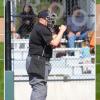all-star Official AllStar Cobalt Product Launch
Umpire-Empire locks topics which have not been active in the last year. The thread you are viewing hasn't been active in 1319 days so you will not be able to post. We do recommend you starting a new topic to find out what's new in the world of umpiring.
-
Similar Content
-
- 18 replies
- 3,298 views
-
- 1 reply
- 1,641 views
-
- 30 replies
- 7,926 views
-
- 5 replies
- 1,707 views
-
- 5 replies
- 1,618 views
-




Recommended Posts